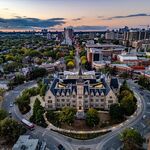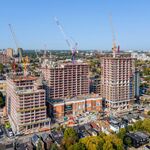The Yonge extension to Richmond Hill will be a band aid and ridership on YRT will stagnate again after a year when it opens. They need to cut the fare back to $3.25.
First, I don't think it will stagnate because there will be huge development on Yonge, especially around the final two stations. Population growth is not stopping around there. I was just up north of there a week or two ago and was amazed at the high-rises going up north of 16 .Imagine when the subway is actually going in!
Second, it is reasonable to assume that by the time it opens (at least 10 years from now, right?) there will be some kind of new fare structure overall. I do agree the current fare is unsustainable.
Tell your councillor. The only reason the fare is so high is because those same councillors tell YRT they need to achieve a 50/50 farebox recovery ratio while also forcing YRT to service areas like Peferlaw and King City, which only serves 5-6 people per peak period.
That's all true but it's not fair to blame it entirely on politics. It's obviously a big challenge for YRT that they are effectively serving two municipalities: an urban suburbs strung out relatively close to the TO border and another, partly-rural region with a few nodes up north of the moraine. I don't envy them trying to balance that.
All this and I haven't even begun to mention the harsh realities that border TTC routes have on YRT routes in southern York Region, which is compounded even more when you realize these routes in sotuhern York region are the big revenue generators that help subsidize the other routes. It's truly a tragic situation where you have an agency that is very well equipped to serve the population but it's constantly being kept back due to factors outside it's control.
Yeah, it's a tricky, tricky situation. It's like they're a bunch of authors being asked to write the middle of a book with no role in writing either the beginning or end. I think overall they've done a good job and Viva is very ambitious but they're coming up to a point where they have to kind of smash through a wall - by getting more suburbanites on transit, restructuring fares at the provincial level etc. - or keep floundering in a tricky middle place and potentially backsliding because of things like high fares.
Really, everyone gets all in a tizzy when someone raises the idea of uploading the TTC but you only have to look at YRT to see what happens when you have a single region with multiple, almost
competing transit services. Riders are not being well served.
Finally - a lot of this route-cuts + fare raising was going on under Rick Leary and a lot of people weren't happy about it. It will be interesting to see what happens now that he's gone or if they can get anyone in his league (for better or worse) again. Also, regional chair Bill Fisch isn't going to be back and so regional council will be fairly different come November. Interesting times lay ahead.




